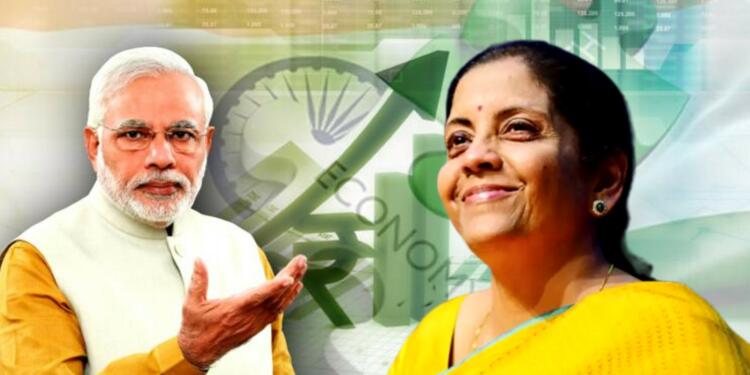The latest survey done by Bloomberg has revealed that India has zero probability of recession in this looming crisis. Whereas the chances of a recession in Sri Lanka, New Zealand, Taiwan, Australia, and the Philippines are 85%, 33%, 20%, 20%, and 8% respectively, India has shown a resilient economic structure. The question remains, how, with such a big population and low per capita income, India remained untouched even with the shadow of recession. Well, the answer lies in the dual (supply and demand) policies of the Modi government.
Read More: As per Bloomberg’s forecast, India will remain immune to recession
The government ensures uninterrupted supply
It is pertinent to understand that due to the Covid pandemic, the lockdown was imminent. In this scenario, the supply chain disruption is bound to happen. People would struggle to get food for such a long period and even the prices would be unaffordable for the common people. This would strip common people of money and suffering would be unbearable.
Considering the grave situation, the government used its earlier reform to bring in supply chain management. Using the trinity of JAM (Jan-Aadhar-Mobile), the government effectively launched the biggest public distribution program of food to the poor. With about 100% targeted beneficiaries, the government transferred cereals and pulses to 800 million citizens. As the grains were already reserved for contingency, the fiscal cost of the supply was limited. Further, using the JAM trinity, the government was able to transfer monetary benefits directly into beneficiaries’ accounts.
After ensuring sufficient food to 800 million citizens, now the focus of the government was to help small, medium, and micro (SMM) industries. Hard hit by the Covid pandemic, small enterprises were struggling with cash drought and banks were reluctant to provide loans for fear of default. In this scenario, the government became the sovereign guarantor of loans and ensured lending from banks and Microfinance Institutions to small industries.
Bcos financial sector tracks borrower credit scores, only a borrower who continues to be genuinely distressed would default. For genuinely distressed borrowers, sovereign guarantee ensures that loan becomes a “quasi cash-transfer.” For details see https://t.co/0P6hjL2xjN 8/n
— Prof. Krishnamurthy V Subramanian (@SubramanianKri) July 30, 2022
On one hand, the government launched the Emergency Credit Line Guarantee Scheme to ensure cash liquidity; on the other, it provided MSMEs with a moratorium and deferment of interest for all term loans. The Insolvency and Bankruptcy Code remained ineffective during the lockdown subsequently helping industries to revive their business in post-Covid time.
The public distribution scheme helped the government to manage the supply of essential products to the poor. Direct and effective transfer of food to the poor does not let the burden rise above the threshold in strict lockdown conditions. On the other hand, supporting industries with lending ensures liquidity and did not let inflation rise in difficult situations as normally happens in a crisis.
Demand push by the government
Inflation, unemployment, growth and recession are the combined mismanagement of supply and demand in an economy. With the strong push of supply, the government was able to control inflation. However, due to the strict lockdown, private players were in a drought of cash and were not able to spend much. In this scenario, unemployment was bound to increase and growth was bound to decrease.
Considering the limited scope for private investment, the government became the biggest spending player. Economic Survey 2022 states that in 2021-22, the total consumption is estimated to have grown by 7% with government consumption remaining the biggest contributor.
While private investment remained at a nascent stage, Investment, as measured by Gross Fixed Capital Formation (GFCF) grew by about 15% in 2021-22 and achieved full recovery of pre-pandemic level. In 2021-22, government Capex and infrastructure spending lifted the investment to GDP ratio by 29.6% and helped in maintaining liquidity in the market.
With the dual strategy of consumption and investment, the government maintained liquidity in the market and does not let growth sleep. The calibrated approach and prompt decision-making provided the Indian Economy to breathe in difficult situations and bounce back with time.
The V-shape recovery of the Indian economy revived the growth prospect of the India Economy. In the economic scenario, where the world is sleeping into recession, the Indian Economy is expected to grow by 7 to 8% in 2022.
Support TFI:
Support us to strengthen the ‘Right’ ideology of cultural nationalism by purchasing the best quality garments from TFI-STORE.COM.
